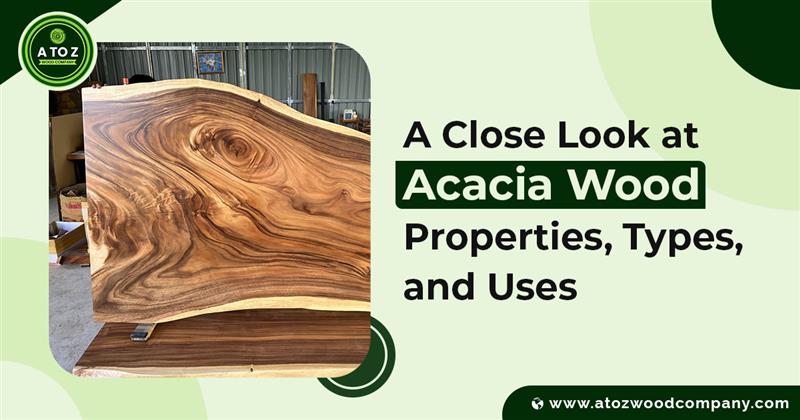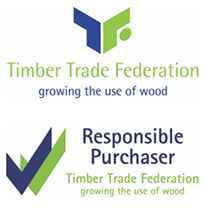Acacia wood has earned a well-deserved reputation for its durability, elegance, and sustainability. Whether you’re crafting luxurious furniture, upgrading your flooring, or looking for a strong material for outdoor use, acacia wood stands out as a reliable and visually striking choice.
In this comprehensive guide, we’ll explore the properties, types, and uses of acacia wood, helping homeowners, woodworkers, furniture makers, and importers make informed decisions.
📌 What is Acacia Wood?

Acacia wood comes from the Acacia genus, a group of over 1,300 species of trees and shrubs found across Asia, Africa, Australia, and the Americas. Known for its rich grains, golden hues, and remarkable strength, acacia has been used for centuries in shipbuilding, carving, and furniture making.
It’s classified as a hardwood, and thanks to its high density and natural oils, it is highly resistant to moisture, insects, and decay—making it an excellent choice for both indoor and outdoor applications.
🌳 Key Properties of Acacia Wood
Understanding the core characteristics of acacia wood helps in evaluating its quality and suitability for various applications.
1. Durability & Hardness
-
It ranks high on the Janka hardness scale (approx. 1700–2200 lbf).
-
Naturally resistant to scratches, dents, and fungal attacks.
-
With proper care, acacia products can last for decades.
2. Appearance & Grain
-
Color ranges from light amber to deep brown with contrasting dark streaks.
-
Has a striking, wavy or interlocked grain pattern.
-
Can develop a beautiful patina with age and exposure.
3. Water & Weather Resistance
-
Naturally water-resistant due to its dense structure and natural oils.
-
Ideal for bathroom furniture, kitchen counters, and outdoor decking.
-
With finishing treatments, it performs even better in humid climates.
4. Sustainability
-
Many acacia species grow rapidly, making them a sustainable choice for timber.
-
Harvested from managed plantations and agroforestry systems.
-
Ideal for eco-conscious buyers seeking FSC-certified wood.
Different Types of Acacia Wood
Several species are harvested for commercial purposes. Here are the most common types:
1. Acacia Koa
-
Native to Hawaii.
-
Highly prized for musical instruments and high-end furniture.
-
Rich reddish-brown color with curly grain.
2. Acacia Mangium
-
Grows in Southeast Asia and Australia.
-
Commonly used in furniture, veneer, and plywood.
-
Easy to process and budget-friendly.
3. Acacia Senegal (Gum Arabic Tree)
-
Known for gum production, but the wood is also used.
-
Durable and moderately heavy.
-
Used for tool handles and turnery.
4. Acacia Melanoxylon (Australian Blackwood)
-
Dark brown to golden hues.
-
Used for cabinetry, musical instruments, and flooring.
-
Close-grained with excellent workability.
5. Babul (Acacia Nilotica)
-
Native to Africa and the Indian Subcontinent.
-
Dense and strong.
-
Suitable for agricultural tools, furniture, and fences.
Common Uses of Acacia Wood
1. Furniture
-
Dining tables, bed frames, chairs, and sideboards.
-
Perfect for rustic, farmhouse, or modern aesthetics.
-
Known for blending durability with artistic grain patterns.
2. Flooring
-
Strong alternative to traditional hardwood flooring.
-
Offers a warm, rich color tone and long lifespan.
-
Resistant to scratches and water damage.
3. Kitchenware & Cutting Boards
-
Food-safe and antimicrobial.
-
Stylish serving trays, salad bowls, and chopping boards.
4. Outdoor Furniture & Decking
-
Naturally resists the elements when sealed properly.
-
Acacia benches, patio tables, and pergolas last for years with minimal maintenance.
5. Interior Décor
-
Wall panels, shelves, decorative accents.
-
Adds a touch of luxury and warmth to interiors.
✅ Advantages of Acacia Wood
-
Long-lasting & Durable
-
Aesthetically Appealing Grain & Color
-
Water & Pest Resistant
-
Sustainable & Eco-Friendly
-
Low Maintenance with Proper Finishing
⚠️ Disadvantages of Acacia Wood
-
Can be heavy and dense, making transportation costly.
-
Susceptible to cracking or warping if not properly dried and sealed.
-
Slightly more expensive than other common hardwoods.
-
Color variation can occur between batches.
Where can I buy high-quality acacia wood in bulk?
At AtoZ Wood Company, we offer sustainably harvested, kiln-dried Acacia wood logs, slabs, and sawn timber with global shipping. Trusted by importers, builders, and furniture makers across Asia, Europe, North America, and Oceania, our timber meets international standards for strength, sustainability, and aesthetic value.
We offer bulk quantities, custom dimensions, and FSC-compliant wood at competitive prices.
Frequently Asked Questions (FAQs)
1. How durable is acacia wood compared to teak or oak?
Acacia is very durable and ranks higher than oak on the Janka hardness scale. While it’s slightly less weather-resistant than teak, it’s still a cost-effective and robust alternative for many outdoor and indoor applications.
2. Does acacia wood scratch easily?
Acacia is a dense hardwood that resists scratches better than softer woods like pine. While no wood is completely scratch-proof, acacia holds up well under regular use, especially with a proper finish.
3. Is acacia wood sustainable?
Yes, acacia is considered a sustainable hardwood, especially when sourced from managed plantations. Many species grow quickly, and responsible harvesting ensures minimal environmental impact.
4. How do I maintain acacia wood furniture?
-
Clean with a soft, damp cloth.
-
Avoid harsh chemicals.
-
Use wood oil or sealant periodically for protection.
-
Keep away from direct sunlight and excess moisture when used indoors.
5. Is acacia wood termite-resistant?
Yes, acacia has natural oils and density that help repel termites and other insects. However, for long-term protection, especially in humid regions, additional treatment is recommended.
6. Can acacia wood be used for cutting boards and kitchenware?
Absolutely. It is naturally antimicrobial, making it a safe and popular choice for cutting boards, serving trays, and kitchen utensils.
 +237 681 25 6934
+237 681 25 6934




